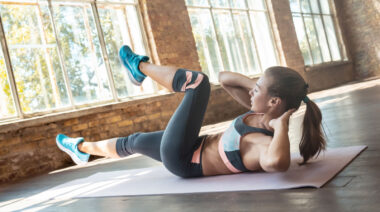“A man is rich in proportion to the number of things he can afford to let alone.”
– Henry David Thoreau
School is back in session and we are all coming up with our best plans for a new year. Yet middle school coaches and PE teachers are often faced with a lack of resources.
They lack:
“A man is rich in proportion to the number of things he can afford to let alone.”
– Henry David Thoreau
School is back in session and we are all coming up with our best plans for a new year. Yet middle school coaches and PE teachers are often faced with a lack of resources.
They lack:
- Coaches: The athlete to player ratio is too disproportionate.
- Physical Literacy: Their athletes have not built a well rounded physical foundation.
- Equipment: 80 kids, 2 coaches, an ab wheel, a leg press, a bench press, and a jammer extension—go!
- Time: Allotting for time to dress they are bootstrapped with as little as 25-minutes to train.
To be clear, we are talking about large groups with a low to medium training age. Even amongst older athletes, the majority fall under this classification. Childhood today has replaced running around the neighborhood, climbing trees, and trying to avoid home (where a list of chores always awaited) with videogames, Netflix binges, and parents who are still packing lunch for their 22-year-olds.
Rather than rotating through a broad array of sports and active lifestyles that promote balanced physical development, our kids are more likely to have sat around all day and hyper-specialized in one skillset. Movement imbalances are exacerbated as athletes crank and clunk around on a fragile foundation.
For this reason, even our best athletes are often the most in need of simple, consistent foundational training—a point hammered home by former Los Angeles Lakers Strength and Conditioning Coordinator, Tim DiFrancesco, in the recent ESPN article, “These Kids are Ticking Time Bombs.”
It occurred to me that what youth physical development needed more than anything else is a simple, daily array of foundation building exercises—something that could be implemented every day without taking too much time and that required no equipment.
We often overlook that cleaning up movement patterns and building a strong, safe foundation is the first priority of training. Luckily this priority is accomplished in the same way we’d build greater strength and power.
Our goals are completely symbiotic. And at a broad level, these goals are trainable in large groups, without equipment. We have to go slow before we can go fast. Often weak links in the chain are covered by momentum. These can only be solidified by working slowly through those ranges of motion.That neurological control is powerful for athletes at all levels.
The Daily 6 Exercise Circuit
“If it’s important, do it everyday.”
– Dan Gable
The right exercises done the right way can be scaled up or down to provide essential daily maintenance. I’d recommend starting each day with the below circuit. It is important to note that doing exercises is not enough—we have to execute them the right way. This circuit is all about quality. We are hardwiring good movement patterns.
Here are the rules for each exercise:
- Execute the exercise with perfect technique. If you can’t do this then we have to modify the exercise to make it easier (typically by limiting the range of motion). Nothing else matters if the technique is bad. Poor form just reinforces bad movement.
- Stay strict to the tempo. By moving slowly and without momentum the athlete learns to control the full range of motion.
Tempos will be designated with three numbers like this: (5-3-2).
The first number is the lowering or eccentric part of the exercise. In the example given an athlete would lower into the bottom range of motion in a steady controlled manner over the course of five seconds. Inevitably, some students will get to the bottom way too quickly.
Others will be mostly steady but then they’ll speed through a sticking point. Just point it out and explain that this is their body hiding a weakness that will limit them down the road if they don’t fix them now.
The second number is the pause or the isometric part of the exercise. In the example given an athlete would hold steady in the bottom range of motion for three seconds. Be on the lookout for your more mobile athletes to be hanging out loosely by their tendons and ligaments. The body should be tense and hold a perfect model of end range of the selected movement pattern.
The third number is the drive or the concentric part of the exercise. In the example given an athlete would drive to the top of the movement. Typically this is where the major joints come to full extension, like when you stand up at the top of the squat and your knees and hips extend. This can be faster, but there is great value in slowing down the drive phase as well.
Now without further ado, the six exercises are:
- Counterbalance Squat (arms extended straight out in front like Frankenstein)
- Superman
- Split Squat
- Push-Up Position Plank with a very slight bend in the elbows (emphasis on the plank)
- 1-Leg Glute Bridge
- Side Plank
Here is the structure for your Daily 6 Circuit. Each exercise will be done for one rep at the prescribed tempo. Do three rounds resting only for transition or as needed.
- Counterbalance Squat (5-3-3)
- Superman (1-15-1)
- Right Leg Forward Split Squat (2-10-1)
- Left Leg Forward Split Squat (2-10-1)
- Push-Up Position Plank with a slight bend in elbows (2-10-1)
- Right Leg 1-Leg Glute Bridge (1-10-2)
- Left Leg 1-Leg Glute Bridge (1-10-2)
- Side Plank Right (1-10-1)
- Side Plank Left (1-10-1)
- Bonus: Bear crawl—as much as possible bear crawl. I tell the athletes to keep their eyes up ahead, to retract their shoulders, stick out their chests, and most importantly to make sure the right arm moves simultaneously with the left leg and vice versa.
Just Get Them Moving
There is certainly a lot more you could do to train young athletes, but in my experience there isn’t too much good training going on in these kids’ lives. Generally there is no foundation.
Rather than making it complicated, why not do the Daily 6? If you want more to consider, check out my Middle School Block Zero Training Program.






